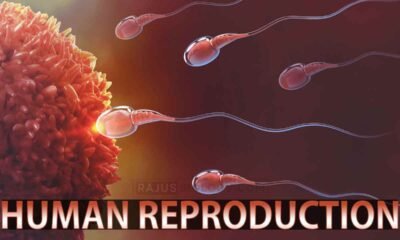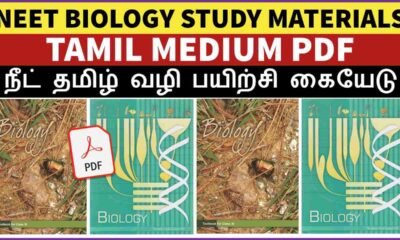Blog
Earthworm Nervous System Short Notes

In this article we will discuss about the earthworm nervous system
Earthworm Nervous System
- Earthworm has a simple nervous system
- Earthworm nervous system is consists of 3 parts: the central, peripheral, and Autonomic nervous system
- Functions of earthworm nervous system is esponse to stimuli and help for movement
1. Central nervous system
- The central nervous system consists of nerve ring and nerve cord
Nerve ring
- It is ring like structure which lies around the pharynx in 3-4th segment
- It has 3 parts:-
i) Supra-pharyngeal ganglia
- They are bilobed in structure
- Present on the dorsal side (3rd segment) of alimentary canal
- Supra pharyngeal ganglia fused to form brain
ii) Circum-pharyngeal connectives
- From either side of supra-pharyngeal ganglia, a pair of thick short band circum-pharyngeal connectives arise which enclose the pharynx
- Circum-pharyngeal connectives meeting ventrally in 4th segment by a pair of fused sub-pharyngeal ganglia
iii) Sub-pharyngeal ganglia
- Found in lower region of nerve ring which lies in 4th segment
- From this, a ventral nerve cord runs towards the posterior region
Ventral nerve cord
- It is long thread like double layered structure
- Arises from the posterior part of sub-pharyngeal ganglia and runs the posteriorly up to the last segment of the body
- Extends from 5th to last segment.
- Nerve cord are two in number but they are fused. So they are called double ventral nerve cord.
- It has swelling bulb like structure in each segment called segmental ganglion
2. Peripheral nervous system
- Those nerve which arise from different parts of central nervous system are called peripheral nervous system.
- From cerebral ganglia, 8-10 nerves arise and supply to prostomium, buccal chamber, and pharynx.
- From subpharyngeal ganglia, three pairs of nerve arise and supply to 2nd, 3rd and 4th segment
- From each segmental ganglion, three pairs of nerves arise and supply to respective segment.
3. Autonomic nervous system
- The autonomic nervous system controls all the involuntary activities of the body
- The nerve arises from circum pharyngeal and they form a network-like structure like plexus in the body wall and gut wall.
Sense organs of earthworm
- Earthworms have well-developed sense organs.
- Sense organs are simple in structure consisting of one single cell or a group of specialized ectodermal cells.
Epidermal receptors
- These receptors are well distributed all over the epidermis
- They are tactile in function and also respond to chemical stimuli and changes in the temperature
Buccal receptors
- Receptors are restricted only to the epithelium of the buccal chamber.
- These receptors are gustatory and olfactory in function They also respond to chemical stimuli
Photo receptors
- These are photo sensitive or light sensitive receptors which are restricted only to the dorsal surface of the body.
- They are totally absent in the clitellar region.
- Photoreceptors enable worms to judge the intensity and duration of light.

 Entertainment1 month ago
Entertainment1 month agoIbomma Bappam: Redefines Telugu Streaming Trend

 Blog1 month ago
Blog1 month ago[PPT] The living world Class 11 Notes

 Blog1 month ago
Blog1 month ago[PPT] Human Reproduction Class 12 Notes
- Blog1 month ago
Class 12 Biology Notes Chapter wise PPT

 Blog1 month ago
Blog1 month agoIosmirror.cc Apk: Enables Smart Screen Sharing
- Blog1 month ago
PG TRB Botany Study Material PDF Free Download
- Blog1 month ago
Class 11 Biology Notes Chapter wise PPT

 Blog1 month ago
Blog1 month agoDownload NEET Biology Study Materials in Tamil












